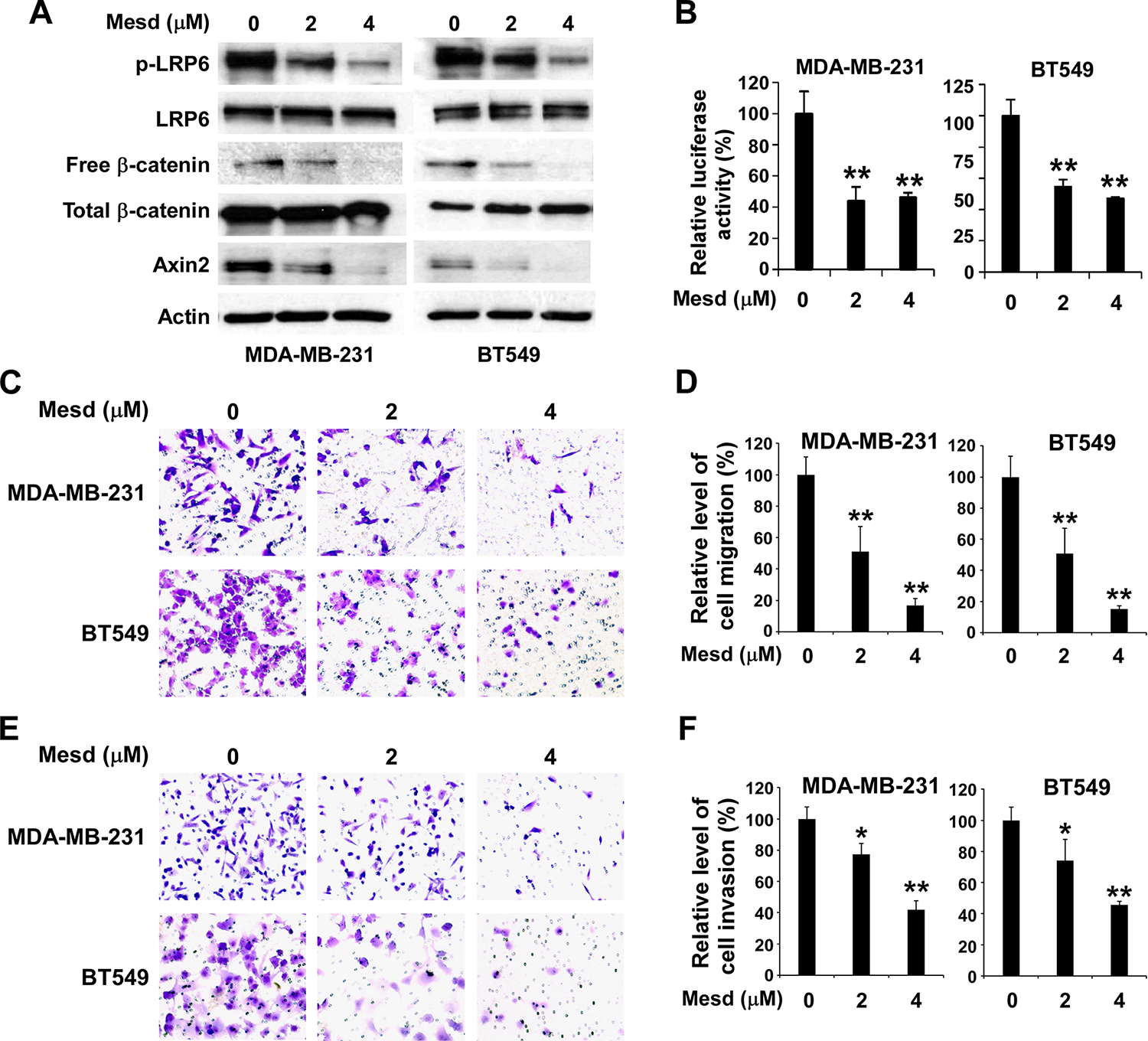Fig. 4.

Mesd inhibits Wnt phosphorylation and Wnt/β-catenin signaling in TNBC cells and suppresses TNBC cell migration and invasion. (A) MDA-MB-231 and BT549 cells in 6-well plates were treated with Mesd at the indicated concentrations for 24 h. The levels of human LRP6, LRP5, phospho-LRP6 (p-LRP6), cytosolic free human β-catenin, total cellular human β-catenin, and axin2 were examined by Western blotting. All the samples were also probed with anti-human actin antibody to verify equal loading. (B) MDA-MB-231 and BT549 cells in 24-well plates were transiently transfected with the Super8XTOPFlash luciferase construct and β-galactosidase expressing vector in each well. After 24 h incubation, cells were treated with Mesd at the indicated concentrations. The luciferase activity was then measured 24 h later with normalization to the activity of the β-galactosidase. Values are the average of triple determinations with the s.d. indicated by error bars. (C-F) MDA-MB-231 and BT549 cells were treated with Mesd at the indicated concentrations. After incubation of 24 h, the transwell migration assay (C, D) and Matrigel invasion assay (E, F) were performed. (C) Representative images of cell migration. (D) Relative levels of cell migration are significantly decreased by Mesd treatment in MDA-MB-231 and BT549 cells. (E) Representative images of cell invasion. (F) Relative levels of cell invasion are significantly decreased by Mesd treatment in MDA-MB-231 and BT549 cells. Data shown are representative of three independent experiments. All the values are the average of quadruplicate determinations with the s.d. indicated by error bars. * P < 0.05, **P < 0.01 versus control cells.
